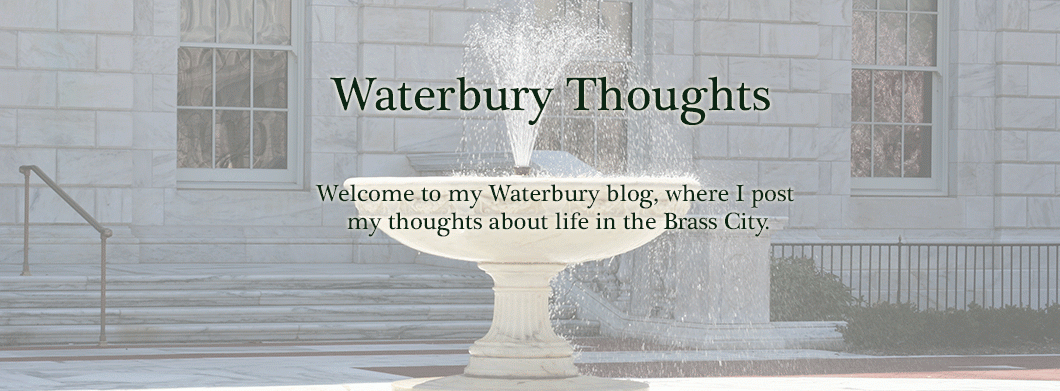We're closer and closer the August 10 primary election in Connecticut, and the campaigns are all in full swing--I get between three and five survey phone calls nearly every day, campaign flyers appear in my mailbox daily, and lawn signs are popping up overnight like mushrooms.
There are dozens of candidates running for the many open elected positions. Voters have an incredible opportunity to bring sweeping change into the state at a time when it is most needed. Our current and recent leaders have failed us. Our state is heading for disaster.
Connecticut has been pretty much run into the ground: the state has a projected
$3.4 billion deficit for the 2011-12 fiscal year, and unemployment seems to only be worsening as major employers leave the state. People have been talking for years about the state's "brain drain" as some of our brightest young people leave for college outside the state and don't move back. Even on a basic functional level, Connecticut has been failing: something that should have been simple and straight-forward, the improvement of I-84, turned into a costly nightmare when drains weren't installed correctly; meanwhile, other much-needed transportation improvements have been stuck in an endless and expensive Möbius strip of studies that result in nothing but a fat paycheck for the consultants. Our cities have been allowed to languish and decay, while the suburbs have been favored, creating an imbalance that hurts the entire state.
I could write more about the problems in Connecticut, but I think you get the idea. We're in trouble.
With the primary coming up, I need to decide who I'm voting for. Since I'm a Democrat, those are the candidates I've focused on. Here are my current thoughts, obviously based on topics that are important to me and using information on their official websites, on some of the candidates:
Dan Malloy
Good: Expresses concern that our transportation infrastructure is inadequate.
Bad: Doesn't seem to have a plan of improvement beyond getting federal transportation grants.
Good: Seems to have some good and specific plans to improve business in the state, and gives at least a passing mention of the importance of Arts & Culture organizations.
Good: Has a plan to continue cleanup of brownfields.
Good: Recognizes that the current system for earning teaching certification pretty much guarantees that many great educators will never pursue certification and teach in the public schools and proposes the creation of alternate routes to certification (this has been a sore point for me: I am qualified to teach CEU seminars to the teachers, and I am qualified to teach the college students, but I can't teach in the public schools because I am not certified, and it simply is not feasible for me to go back to school in order to get certified; in fact, I've taught at community colleges and UConn for years and can see how our students aren't getting the education they need in the high schools, which just adds to my frustration on this topic).
Bad: In discussing parent involvement in education, he seems to be completely ignorant of the fact that many of the low-achieving students are stuck in households with parents who will never be involved or supportive or nurturing. What about these kids?
Good: Wants more "affordable housing" and lower property taxes.
Bad: Doesn't explain how to compensate for loss of revenue if property taxes are lowered, and doesn't seem to have more than a vague and superficial knowledge of housing issues.
Ned Lamont
Good: Has specific plans for improving transportation, particularly train transit, all of which sound great to me (especially increasing frequency on the Waterbury line and adding wifi to all the trains), plus increasing safety for bicyclists, plus improving bus service.
Good: Understands that our cities are transportation hubs and should be developed accordingly.
Good: Appreciates the benefits of charter schools and other innovative approaches to education, as well as the benefits of schools as true community centers and the importance of vo-tech schools.
Good: "The road to economic recovery runs through our cities. Connecticut was at its best when we had vibrant urban centers." and "Connecticut’s future must start with our cities. They must be centers of entrepreneurship, where the best and brightest can innovate, start businesses, and create jobs. With livable, walkable downtowns, our cities can keep young people in Connecticut. As governor, I will lead the revival of our urban areas."
Summary: Malloy has strong, specific plans for education and business, but is vague on every other topic. Lamont seems to have a much better idea of how to get things done, and seems to have many of the same goals and interests as myself. I have some specific questions I'd like to ask both candidates, but as it stands now, I'll be voting for Lamont.
I have already blogged some about
Jarjura running for State Comptroller. As far as
Kevin Lembo goes, his experience as assistant state comptroller suggests to me that he has solid qualifications for the job.
As the title of this blog post suggests, I'll be writing more on the elections, as time permits.

.JPG)
.JPG)